How New Orleans Shaped Queer Hip-Hop For The Rest Of America
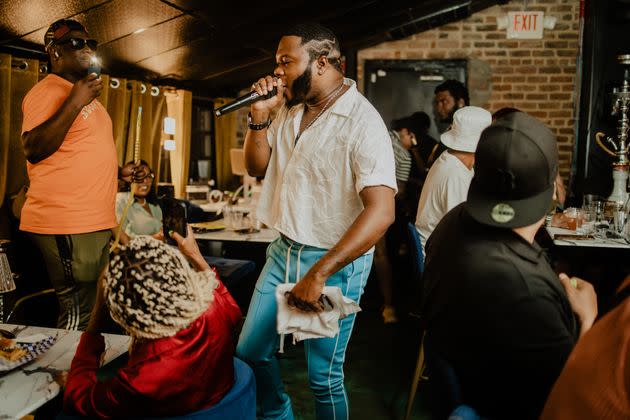
It’sahumid Thursday night in New Orleans and everyone in this cramped Uptown hookah lounge has caught the spirit, including my girlfriends and I. BJSoCole, a young local bounce artist, is performing his energetic single “Pump It Up” and nearly everyone in the room — and it’s mostly women and queer men — has abandoned their seat for a spot on the makeshift dance floor. In the famous words of Big Freedia, it’s ass everywhere. Here, twerking is not a mating call. It’s a sensual salute to the beat. We’re here for us.
Creating that space for women and nonbinary people has been an intentional effort by queer rappers such as BJSoCole. I gravitated toward these spaces almost immediately when I was living in New Orleans in the late 2010s. “There’s an energy to making women feel empowered and encouraging them to be who they are,” he says. “I’m not calling them out their name. I’m not trying to make them be hoes or nothing like that. I do it respectfully. Let’s dance. Let’s just be free.”
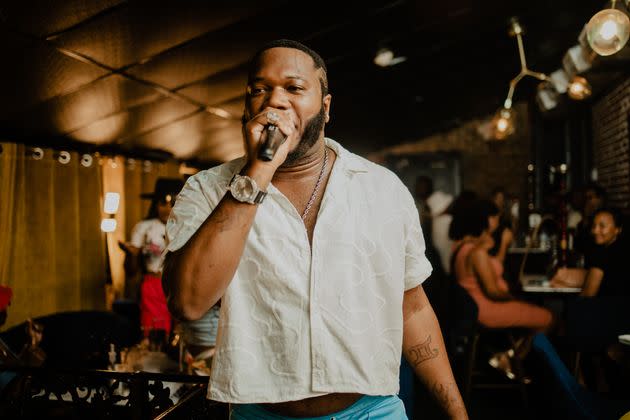
New Orleans has long been an oasis for freedom of sexual expression and gender fluidity, which is especially surprising when you consider the state it’s located in. “I’m not going to sit here and say, like, we don’t have incidents,” BJ tells me when we chat a few hours before his performance. “But here, it’s like it’s the norm. It’s not shocking to see a guy with a wig on. And also, being in bounce, we’re pretty respected in the city.”
Bounce music — a style of New Orleans hip-hop — has a historic fluidity with an origin that’s heavily debated. The genre’s earliest iteration, chant-based and reliant on one type of beat, was dominated mainly by straight men. Then, women got on. Then it became gloriously queer and hasn’t looked back. Today, New Orleans persists as the epicenter for queer rap as the city continues to churn out talent that somehow both perpetuates and challenges hip-hop’s foundational values.
“You know they call me ‘Baby Freedia,’” BJ says with a coy smile. “Freedia for the next generation — because of how hard I work.”
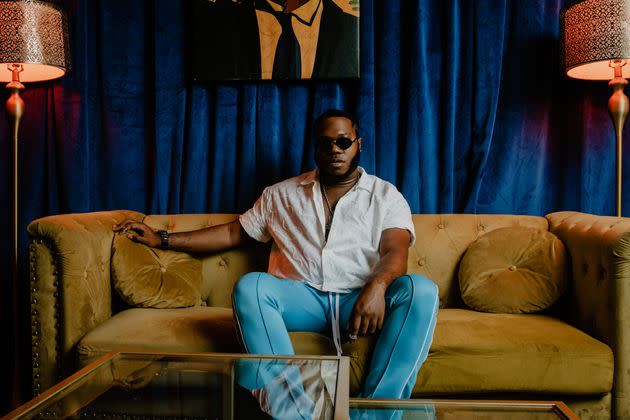
BJSoCole has taken the classic bounce formula and leaned in on lyrics to create an energy that translates to TikTok for his Gen Z peers.
Although Freedia’s music has recently evolved to appeal to a more mainstream sensibility, she’s still the same artist fans came to love early on. She still belongs to the streets and is exactly who you want to hear when you need your spirit jump-started or a shot of self-confidence. To put it plainly, listening to Big Freedia makes me feel purely unfuckwithable.
And so, I want nothing more than for BJ to live up to that nickname. He’s front and center in this next generation of queer New Orleans rappers — the ones who studied the bounce blueprint and remixed it. And he did not come to play. “I’m not cocky at all. I’m very sweet and humble,” he tells me. But when I get in the booth, I ‘Nicki Minaj’ this shit.” He’s taken the classic bounce formula and leaned in on lyrics to create an energy that translates to TikTok for his Gen Z peers.
Just a few months before chatting with BJSoCole, I sat down with Freedia back in New York to discuss the message she’s trying to convey in her most recent music. “I want people to know that if I did it, they could do it too,” she tells me. I’m a Black queen that comes from New Orleans, and you can go many places coming from out the hood.”
“It’s energy, and it’s culture,” BJ says when I ask him about the swagger that New Orleans drenches its own with. “It’s just something that’s deeply rooted in us. I feel like anybody could come here and want this, but it’ll never be authentically done like we do it.”
Big Freedia and her fellow bounce pioneers — Katey Red, Sissy Nobby and Vockah Redu — started a movement in the ’90s that burned slow and strong in New Orleans. In the mid-2000s, the post-Katrina displacement of musicians was instrumental to the early spread of bounce. But as of a few years ago, you can hear that Triggerman beat (a sampled one-bar drum loop that’s ubiquitous in bounce music) and Freedia’s infamous chants every-damn-where. I love that the genre is getting its shine, but I sometimes wonder how many listeners recognize the crucial cultural context.
Yes, a bunch of straight men (and Mia X) from No Limit and Cash Money deserve their props for popularizing bounce in New Orleans, but it swiftly and seamlessly became the soundtrack of revolution for queer people. By the early 2000s, songs such as Freedia’s “Gin In My System” were raunchy, effervescent emblems of sexual freedom and gender fluidity. And New Orleans was arguably the only place on planet Earth that could hold space for this movement.
“New Orleans is kinktopia,” says $leaze EZ, a young nonbinary rapper creating a buzz in the city’s hip-hop scene and beyond. “You kind of see people for who they are beyond how we identify them in society… As long you don’t fuck over nobody in this circle, you’re good.”
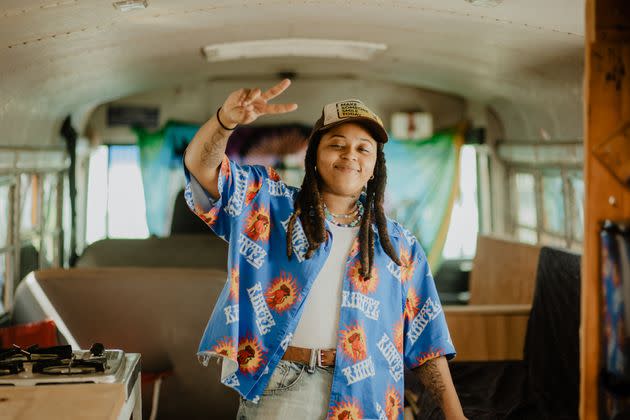
$leaze’s style of hip-hop deviates pretty far from bounce but still clings to its tenets of confidence, sexual bravado and thirst. And they ($leaze uses all pronouns, same as Big Freedia) are spot on about the city’s unique perspective. Since as far back as the late 19th century, New Orleans has been a haven for LGBTQIA+ people but has never been advertised publicly as such in the same ways as San Francisco or New York. Even when crossdressing was outlawed in the city in the mid-1900s, it was allowed during Mardi Gras.
New Orleans, from its very origins, has been known for its “alternative sexual economy and spaces,” says Alix Chapman, a Black queer studies scholar and professor of African American studies at Emory University.
Chapman explores this concept in his forthcoming book, “Raising the Bottom: Bounce Music and Black Queer Performance in New Orleans,” where he’ll also provide context on queerness and cosplay. “The increased visibility of Black queer people in New Orleans is in part due to various traditions of public performance,” he tells me. “Carnival and practices of masking have been used to challenge gendered and sexual norms that make room for queerness.”
Chapman explains that New Orleans has also informed trends in global pop culture for centuries across genres. “I argue that this can be traced to the influence of Congo Square, a primary site of African diasporic performance in the Western world. There’s also a long history of music and parading as a means of resistance to various forms of oppression.”
Today in New Orleans, some of that oppression takes form in anti-queer and -trans legislation, an overall lack of resources, and a notorious crime rate that was exacerbated by the pandemic. “I feel like since New Orleans is so low on everybody’s totem pole from education, to politics, to infrastructure to money in general,” $leaze says. “We’re all kind of just in this cesspool of whatever this is, together.”
She’s found both security and motivation, however, in GLBL WRMNG, an artist collective composed of New Orleans-based singers, emcees, and activists of color. In that vein, Chapman points to contemporary Black queer performance, locally and internationally, as products of these radical challenges to the status quo.
Here in New Orleans, your sexual and gender identities are not your whole existence; they’re simply a visible and unapologetic part of who you are.
Still, no one is out here being like, “Queer as fuck? Move to New Orleans!” But every queer rapper I spoke to for this story said some version of the same thing: Here, your sexual and gender identities are not your whole existence; they’re simply a visible and unapologetic part of who you are. And when you’re an emcee, all that matters is that you bring that heat. And as BJSoCole so accurately points out, “We bring the women out.”
The new generation of bounce rappers has clearly inherited their talent for inciting twerk tornadoes from Big Freedia and Sissy Nobby. In fact, Sissy Nobby, who I spent an afternoon chatting with over tequila sodas and crawfish pies, still hosts twerking contests on his (also an all-pronouns kind of girl) Instagram page.
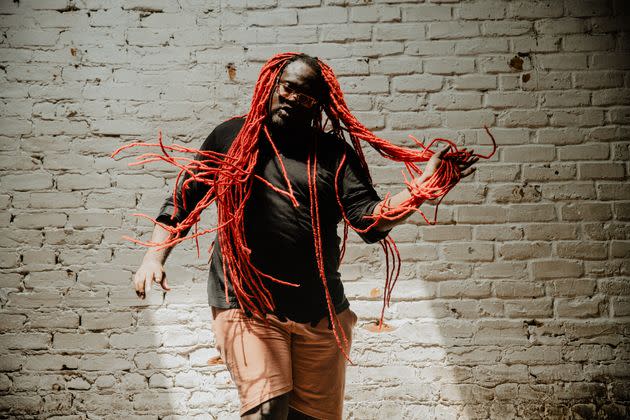
Sissy Nobby’s whole vibe rests on his distinctly raspy voice (“DJs didn’t play my music at first because they couldn’t understand what I was saying,” he tells me) and an emotional rollercoaster of a catalog that rolls from confrontational, chantable hooks to romantic storytelling. “Consequences,” for example, dropped over a decade ago but is still a barroom staple, as well as a local Sweet 16 pick, apparently; Nobby just got asked to perform at one recently. The kids are clearly all right in New Orleans.
“We’re a party city. So when we’re on the mic, they’re hyping us. It’s the energy from the crowd,” he says. And the crowds at first were mostly women. Now, they’re everyone. “Male fans claim they want to see the females dance — but I know they’re fans,” he adds.
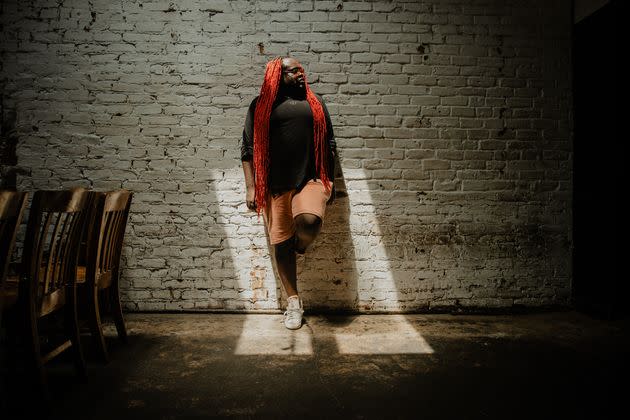
Hip-hop has always been called out for harboring homophobia, but let’s be real, that shit permeates every genre of music. Hip-hop, in many ways, has been a hall pass for queer rappers in the city. When bounce was becoming more queer in the early 2000s, though, there was only room for a few, causing some tension, Nobby claims.
“I think the beef was about being accepted by the straight community,” they tell me. “In bounce, we beefed with each other because we wanted to be the only one that was accepted. That’s how we got accepted — through bounce. Before that, these dudes out here would beat the shit out of us.”
And right therein lies the complexity of being a Black, queer rapper in New Orleans. The practice of creating art as your most authentic self runs alongside the thick, impenetrable reality that your body makes you a target.
This friction between Black queer rappers is a symptom of the hip-hop industry at large, Chapman tells me. “In terms of the music business, there are always issues of individualism and competitiveness. For women, people of color, queer, and trans people — when anything negative occurs, their otherness and individual failings are seen as the reason for why there is a problem,” he says, pointing out that systemic heteronormativity, racism and capitalism make any sense of community hard to realize.
All of this becomes evident to me when I reflect on how some queer rappers ascend to the “mainstream” while others do not. Sissy Nobby tells me how much he loves Lil Nas X and the way he’s able to move between musical styles in his work. As the single most influential queer rapper out now, he’s showing a younger LGBTQ+ audience that they can live outside of straight white America’s expectations. And while Lil Nas X has no known connection to New Orleans, he’s sitting on a throne built in this city.
New Orleans is where queer hip-hop got its wings, and it’s still a hub for queer expression in the genre. Tracing that line from the pioneers to the newbies reinforces the belief that this port city has always been one of the most quietly progressive spaces in America.
“New Orleans is kind of crazy because — I really shouldn’t say this but — if I was to turn my internet off I wouldn’t know certain problems exist for queer and people of color… I will be living my daily life like not experiencing it here,” $leaze tells me after exhaling a plume of smoke.
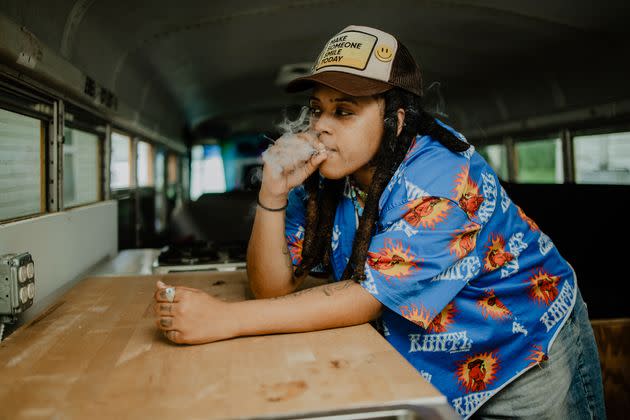
It’s a wild, fascinating claim to make but I believe her. Times are a little different than when Nobby was first taking the stage in the late ’90s. And if you’ve ever met $leaze, seen her perform, or observed the people she keeps around her constantly, you’d get it. In 2023 New Orleans, your squad can serve as blackout drapes. And you’ll sleep well.
All of this historical and cultural context of how queer rappers survive and thrive in New Orleans informs the content of their music: It’s raw, energizing, and undeniably empowering, especially for women and femmes. $leaze’s music is like Hennessy for a soul sobered by the patriarchy. Clearly a student of Kendrick Lamar in both flow and intellectuality, her style is cerebral and playful when it comes to gender fluidity and relationships.
“I grew up around a lot of straight cis men. That’s kind of where I learned romance and presentation… when I finally met queer people, I noticed my experiences were the polar opposite from them,” she tells me. “As queer person now, I’m finding the balance and making sure things I do aren’t just part of some heteronormative shit. I make that heteronormative shit super queer.”
Making heteronormative shit queer feels like exactly what the world needs right now. And it’s all here in New Orleans. Take note of the potential new slogan, tourism board.
That constant shapeshifting of gender and sexual expression is a legacy. And Freedia wants nothing more than for the next generation to continue to disrupt the system. “I hope the work that we’ve put in — and especially the work that I’ve put in — allows them to be able to have a better chance at everything,” she says. “A smoother ride, an easier door to walk into when it comes to music, just getting themselves out there.”
Back at the hookah bar, I’m tucked into a blue couch a few feet away from the stage area, watching BJ work the room. He’s confident without pretension, and we feel safe with him. It’s just us, the triggerman beat and the emotional release of the twerk.
“Did you have fun?” he asks, his face aglow after his performance. I nod and tell him he’s doing God’s work. He laughs.